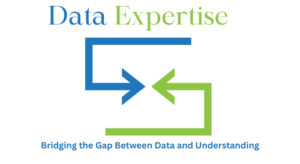In the fast-evolving world of web development, simplicity and flexibility are often the keys to success. For developers looking for a lightweight yet powerful framework to build web applications, Python Flask is a popular and dependable choice. Whether you’re creating a personal blog, a RESTful API, or a full-featured web app, Python Flask provides the tools you need to get the job done efficiently.
What Is Python Flask?

Python Flask is a micro web framework written in Python. It was developed by Armin Ronacher and released in 2010 as part of the Pocoo project. The term “micro” doesn’t mean it’s limited in capability—it simply means Flask is minimalistic in design, giving developers more control over the structure of their applications. Unlike larger frameworks like Django, Flask doesn’t include built-in tools like ORM (Object Relational Mapping) or form validation by default. Instead, it allows developers to choose their own components as needed.
Flask is built on top of the Werkzeug WSGI toolkit and Jinja2 templating engine, both of which are also part of the Pocoo project. This makes Python Flask not only lightweight but also highly extensible and modular.
Why Use Python Flask?
There are several reasons why developers choose Python Flask for their web development projects:
- Simplicity and Ease of Use: Flask has a straightforward syntax and clear documentation, making it ideal for beginners.
- Flexibility: You can build everything from simple web pages to complex enterprise applications.
- Modularity: Since Flask is unopinionated, you have the freedom to use the tools and libraries that best suit your project.
- Community Support: Flask has a large and active community, which means plenty of tutorials, extensions, and forums are available.
- Scalability: Though lightweight, Python Flask can handle high-traffic applications when combined with proper tools and best practices.
How Do Web Developers Use Python?
Python has become one of the most widely used programming languages among web developers, primarily due to its readability, simplicity, and rich ecosystem of frameworks. Web developers use Python for:
- Backend development: Using frameworks like Flask or Django to handle server logic, routing, and data processing.
- Web scraping: Automating data extraction with libraries like BeautifulSoup or Scrapy.
- API creation: Building RESTful APIs with Flask or FastAPI for mobile and web clients.
- Data visualization and dashboards: Integrating with libraries like Plotly, Dash, or Pandas to create real-time analytics dashboards.
- Automation and DevOps: Writing scripts for deployment, testing, and system monitoring.
Python’s integration with cloud services, machine learning models, and database systems makes it a perfect bridge between web development and advanced data applications.
What Is a Web Framework?
A web framework is a collection of modules, libraries, and tools that simplifies web development by providing a structure for building applications.
Instead of writing repetitive code for tasks like routing, input validation, and database connectivity, developers rely on frameworks that handle these essentials efficiently.
Core functions of a web framework include:
- Handling HTTP requests and responses
- URL routing and mapping
- Templating for dynamic content
- Session management and authentication
- Database interaction via ORMs (Object Relational Mappers)
Frameworks like Flask, Django, and FastAPI empower developers to focus on business logic instead of reinventing core web functions.
Why Is Flask a Good Web Framework Choice?
Flask stands out because it’s simple, flexible, and powerful. Here’s why developers love it:
- Minimalistic Design: You only get the essentials, so you can build your own structure instead of being confined by strict conventions.
- High Customizability: You can integrate any database, front-end framework, or authentication system you prefer.
- Rapid Prototyping: Perfect for startups and product teams needing to test ideas quickly.
- Strong Community and Extensions: From Flask-RESTful to Flask-SQLAlchemy, hundreds of extensions are available.
- Easy Learning Curve: Ideal for Python beginners transitioning into web development.
Flask’s flexibility makes it suitable for both microservices and large enterprise-grade applications.
What Is a Backend Web Framework?
A backend web framework manages what happens on the server side of a web application—how data is processed, stored, and sent back to the client.
In Flask (a backend framework):
- The server receives a request (like a user logging in).
- Flask processes it through routes and logic.
- It fetches or modifies data in the database.
- Finally, it returns a response (like a webpage or JSON data).
Backend frameworks like Flask, Django, and FastAPI ensure smooth communication between clients (front end) and servers (database or APIs).
Getting Started With Flask
To get started, install Flask via pip:
pip install flask
Create a simple app (app.py):
from flask import Flask
app = Flask(__name__)
@app.route('/')
def home():
return "Hello, Flask!"
if __name__ == '__main__':
app.run(debug=True)Flask supports adding routes, templates, static files, and more as you expand your project.
What Is Flask Used For?
Flask’s lightweight architecture makes it ideal for:
- Building REST APIs for web or mobile apps
- Creating dashboards and analytics tools
- Developing small to mid-scale web apps
- Serving machine learning models as APIs
- Rapid prototyping and MVP development
Its adaptability across industries—finance, healthcare, education, and AI—makes it one of Python’s most versatile frameworks.
Build Flask Routes in Python
Routes define how users interact with your web app. In Flask, routes are created using decorators:
@app.route('/about')
def about():
return "This is the About page!"You can also add dynamic routes using variables:
@app.route('/user/<username>')
def user_profile(username):
return f"Welcome, {username}!"This dynamic routing helps personalize user experiences and handle multiple URL patterns efficiently.
Variables in Flask
Variables in Flask can be passed both through the URL and templates.
For example, passing URL variables:
@app.route('/post/<int:id>')
def post(id):
return f"Displaying post number: {id}"Or through Jinja2 templates, where Python variables are dynamically rendered in HTML:
<h1>Welcome, {{ username }}!</h1>This integration of Python logic within templates makes Flask ideal for interactive and data-driven applications.
Django vs. Flask: What’s the Difference?
| Feature | Flask | Django |
|---|---|---|
| Type | Micro-framework | Full-stack framework |
| Structure | Flexible and unopinionated | Built-in architecture |
| Database Support | Add manually (e.g., SQLAlchemy) | Built-in ORM |
| Learning Curve | Easier for beginners | Steeper for new developers |
| Use Case | APIs, microservices, prototypes | Complex, enterprise applications |
Summary:
Flask gives developers freedom, while Django provides structure. If you need scalability with flexibility, Flask is your framework.
How to Create a Simple Web App with Python Flask

To start building with Python Flask, you need to have Python installed on your machine. Once that’s ready, install Flask using pip:
pip install flask
Here’s a basic example of a Flask application:
from flask import Flask
app = Flask(__name__)
@app.route('/')
def home():
return "Welcome to my first Python Flask app!"
if __name__ == '__main__':
app.run(debug=True)
This script does the following:
- Imports the Flask class.
- Creates an instance of the Flask application.
- Defines a route (the URL path) and a corresponding view function.
- Runs the application with debugging enabled.
When you run this script, Flask starts a development server and hosts your web application locally.
Flask Security and Authentication
Security is a top concern for any web app. Flask provides several ways to implement secure authentication:
- Flask-Login: Manages user sessions and authentication.
- Flask-JWT-Extended: Enables JSON Web Token-based API authentication.
- Flask-Security-Too: Integrates password hashing, login management, and role-based access control.
Additionally:
- Always use HTTPS (SSL/TLS) in production.
- Enable CSRF protection for forms using Flask-WTF.
- Sanitize user inputs and validate API payloads to prevent injection attacks.
Security frameworks like Auth0 and Firebase Authentication also integrate easily with Flask APIs.
Flask Performance Optimization
Flask apps can achieve enterprise-grade performance with smart optimizations:
- Caching with Flask-Caching: Cache pages or database queries for high-traffic routes.
- Gunicorn or uWSGI deployment: Replace the default development server with production-grade WSGI servers.
- Asynchronous tasks: Offload heavy tasks using Celery and Redis for background job processing.
- Database connection pooling: Reduces overhead during concurrent requests.
Using these optimizations, Flask can handle thousands of concurrent requests when deployed correctly.
Deployment: From Local to the Cloud
Once your app is ready, you can deploy Flask across multiple environments:
- Heroku: Quick and easy deployment for small projects.
- AWS Elastic Beanstalk or EC2: Great for scaling production applications.
- Docker: Containerize your app for consistent environment setup.
- Google Cloud Run or Azure Web Apps: Serverless hosting with automatic scaling.
Example Dockerfile:
FROM python:3.10
WORKDIR /app
COPY . .
RUN pip install -r requirements.txt
CMD ["python", "run.py"]
Deploying with Docker ensures that your app runs identically across testing, staging, and production environments.
Flask in Machine Learning and Data Science
Flask is also the preferred framework for serving ML models as web APIs.
You can use Flask + Scikit-learn, TensorFlow, or PyTorch to expose prediction endpoints.
Example:
@app.route('/predict', methods=['POST'])
def predict():
data = request.get_json()
prediction = model.predict([data['features']])
return jsonify({'prediction': prediction.tolist()})
This is how data scientists deploy AI models into production environments quickly and efficiently.
Key Features of Python Flask
- Routing: Define routes using decorators, allowing you to map URLs to functions.
- Templates: Flask uses Jinja2 for dynamic HTML rendering.
- Request and Response Objects: Easily handle HTTP methods like GET, POST, PUT, and DELETE.
- Sessions and Cookies: Built-in support for managing user sessions and cookies.
- Extensions: Flask supports many extensions like Flask-SQLAlchemy for database integration, Flask-Login for user authentication, and Flask-Mail for sending emails.
Use Cases of Python Flask
- Web APIs and Microservices: Flask’s lightweight nature makes it ideal for building RESTful APIs and microservices.
- Dashboards and Admin Panels: Combined with frontend libraries like Bootstrap, Flask is perfect for creating interactive dashboards.
- Prototyping and MVPs: Its rapid development capabilities make Flask a go-to choice for startups and product teams.
- Educational Projects: Due to its simplicity, Flask is widely used in academic settings to teach web development.
Advantages and Disadvantages of Flask
Advantages
Lightweight and fast for development
Highly extensible with numerous plugins
Simple syntax and clear documentation
Excellent for building APIs and microservices
Perfect for small-to-medium web apps
Disadvantages
Lacks built-in ORM and admin interface
Requires manual setup for authentication and database handling
Not ideal for very large projects unless carefully structured
Some performance limits compared to compiled frameworks
Conclusion
Python Flask stands out as a versatile and developer-friendly web framework that suits projects of all sizes. Its minimalist approach offers full control over application architecture, while its flexibility ensures that developers can customize their stack based on specific needs. Whether you are just starting with web development or looking to build scalable applications, Python Flask is a framework worth exploring. With strong community support and rich documentation, Flask continues to empower developers worldwide.
FAQ’s
Is it worth learning Flask in 2025?
Yes, learning Flask in 2025 is absolutely worth it — it remains a lightweight, flexible, and widely used Python web framework ideal for building APIs, prototypes, and scalable web applications efficiently.
What is the flask framework in Python?
Flask is a lightweight and flexible web framework in Python used to build web applications and APIs. It provides essential tools for routing, templates, and request handling while allowing developers to add extensions as needed.
Is Netflix built with Flask?
Yes, Netflix uses Flask for some of its internal applications and APIs. Flask’s lightweight and modular design makes it ideal for handling specific backend services within Netflix’s large microservices architecture.
Is Flask backend or frontend?
Flask is a backend web framework. It handles server-side logic, such as routing, database operations, authentication, and API creation — not frontend tasks like UI design or styling, which are handled by HTML, CSS, and JavaScript.
Is Flask still relevant in 2025?
Yes — Flask is still relevant in 2025, especially for lightweight applications, APIs, rapid prototypes and services where developer control and minimal overhead matter.




